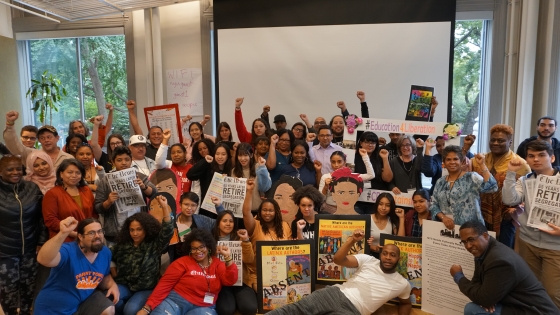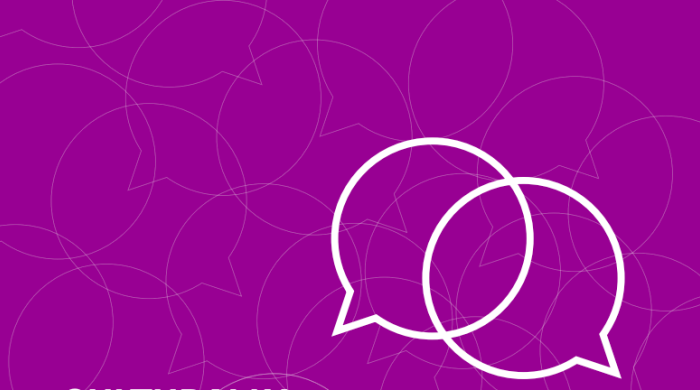Gathering People/ How This Should Be Used
As a statement of purpose, you must know: You - much less anyone else - do not need to be an expert. We are all growing in this work. We’re constantly in the process of reflecting on how we can best make CRSE true in the city. We would ask those who’ve taken this work on to think about what it might look like in their schools and other spheres of influence.
The equity teams we discuss in the following document can be, but are not exclusive to: formal school teams, informal lunch and after-school groups of stakeholders, or even practitioners and community members collaborating outside of school hours. This is meant for everyone and anyone who wants to engage in this work. Equity teams without statements of purpose and sustainable principles languish if practitioners don’t make this quest for educational justice into a way of life. Also, while this is scalable and malleable, we also have taken great care to attend to the progression of the professional development (PD) and the corresponding resources. This can be used as formal PD but was developed as a shared learning experience where the facilitator and participants are learning with and from each other through a series of conversations based on documents that can be used as resources to guide their personal and professional growth and impact school change.
Using this to fidelity may be most beneficial, we welcome feedback from any and all participants.
Talking About Race
Conversations about race can be difficult, uncomfortable, and contentious depending on who is in the room. That is all part of the process. We encourage facilitators and participants to lean into the discomfort rather than shying away from it. We normalize generative conflict, that is, conflict that can lead the group forward, towards constructive change and new, creative ideas. To support your facilitation, we provided some guidelines on how to have these conversations and have embedded these aspects into our session design:
- Ground in purpose— Begin the session sharing the purpose, goals, vision for why we are all here today.
- Create community agreements— Open each session with community agreements to guide the space and steer participants back to when conversations become difficult. Session 1 will guide you in creating your own agreements collaboratively. These can be used as a guide. These agreements can include, but are not limited to:
- Use “I” statements— speak from your own direct experience only
- Move up, move back— encourage those who are not sharing as much to “move up” and those who have already shared a lot to “move back” to make space for others
- One mic— only one person speaks at at time
- Acknowledge intent vs impact— sometimes no matter how well-intentioned someone’s comment is, they can still hurt or harm to someone else. It is important to acknowledge that there is a difference between intent and impact, and to focus on the impact when addressing the harm that occurred.
- Center those most marginalized in the room— notice who is most comfortable speaking in the space. Sometimes this can be people of identities that hold more privilege (e.g. across race, class, gender, ability status, etc.). Make sure that those of the most marginalized identities in the room are given opportunities to share, by either directly inviting them into the conversation, or highlighting something
that they said to guide the conversation. - Close the conversation— you can close your conversation with reflections, takeaways, offer gratitude to the participants for showing up and sharing as they did. It is important to have a closing container for your conversation.
For further resources on how to talk about race and racism, check out Courageous Conversations. For resources on how to engage with young people and children, you can visit this page from the Center for Racial Justice in Education.
Structure of this Guide
This guide contains 10 document-based discussion guides. Ideally, groups would meet at least once monthly for ten months. Each session should last at minimum 75 minutes to 2 hours. Shifts to the time designations can be made based on the amount of time our group is able to meet. More time allows for deeper reflection and conversation. Prior to each session, the facilitator would send out the PreWork - readings and reflection questions - so folks can have ample time to read through the documents and prepare to engage (about 90-120 minutes of independent resources review and journaling for preparation each month). We suggest participants keep a journal or notebook to jot their thoughts throughout this process. This helps hold on to important info, key ideas and is powerful for personal reflection and growth throughout the series. The facilitator should read through the entire agenda and check out the key takeaways for each section.
Below is an outline of the protocols and sections that are in each agenda. Our goal is that this structure minimizes the planning time needed to help prepare for these groups and can help the facilitator feel confident getting started!
The Circle Way: Community Circle Share Structure
Circle Share: “Once upon a time, fire led our ancestors into the circle. It made sense to put the fire in the center and to gather around it. A circle defined physical space by creating a rim with a common sense of sustenance lighting up the center. These ancestors needed the circle for survival - food, warmth, defense - and they discovered that the circle could help design social order (From the book, The Circle Way, A Leader in Every Chair. The text is from this website which describes the history and beauty of the Circle Way of Sharing). We have always known that the circle is a natural way to gather for conversations. Circle is democratic space where we can look each other in the eye, lean in and listen, and include all voices with a sense of equality. The practice of circle often leads to more creative options, wiser decisions, clearer actions.”
A circle share is based on the methodologies of Christina Baldwin and Ann Linness. The Circle Way is a process that brings people together in a circle shape. Each person has an opportunity to share and have their voice heard while the other participants focus on uninterrupted listening. The Circle Way website states It allows for equity of voice and is non-hierarchical. Participants are invited to pick a talking piece that is meaningful to the group that is passed around as each participant takes their turn sharing. There are no interruptions, questions or back and forth dialogue. This is simply an opportunity for sharing, reflection, and connection. A participant has the opportunity to “pass” and then to share if comfortable when
everyone in the circle has finished sharing.
Discussion Protocol Description: Read Think Write Talk (RTWT)
Read Think Write Talk (RTWT) is an adaptation of a protocol often found in literacy curricula. It supports the reflection and discussion process in group settings. In the CRSE sessions, everyone will be invited to read or visit a text, video or resource, think about a question or prompt, write their thoughts or responses and lastly, have the opportunity to engage with others to share. As we engage in courageous conversations about race and oppression, this protocol will allow us to start with the personal, local and immediate - getting to the core of our beliefs and experiences without being influenced or persuaded by others’ ideas and responses - and then include the sharing and hearing of additional perspectives and experiences.
To note, the timing for this process can be fluid, but the goal is to allow for both small pairs and large groupings to be thoughtful about their responses and be intentional about their word choices and interactions with others. For the nature of these sessions, the Read, Think, Write will take place before the session so that participants can come to the discussion time prepared to engage largely in the Talk; however, with more time for discussions, please feel free to amend the timing and include more opportunities for writing and reflection. As always there may be more than one content or questions that you can discuss in the allotted time, work to keep the conversation growing but know that the discussion that you have during that time is the exact one you were meant to have.
Key Takeaways
Each section has a few big ideas listed that the facilitator can preview to prepare for the session to help push the conversation and crystalize some of the essential understandings for that session. Most of these should become uncovered as participants share and engage as opposed to posted or named as an objective at the beginning of the session. Remember this is not a traditional Professional Development, this is an opportunity to learn with the community, uncover truths, relearn concepts, clarify misconceptions, and plan for change!


